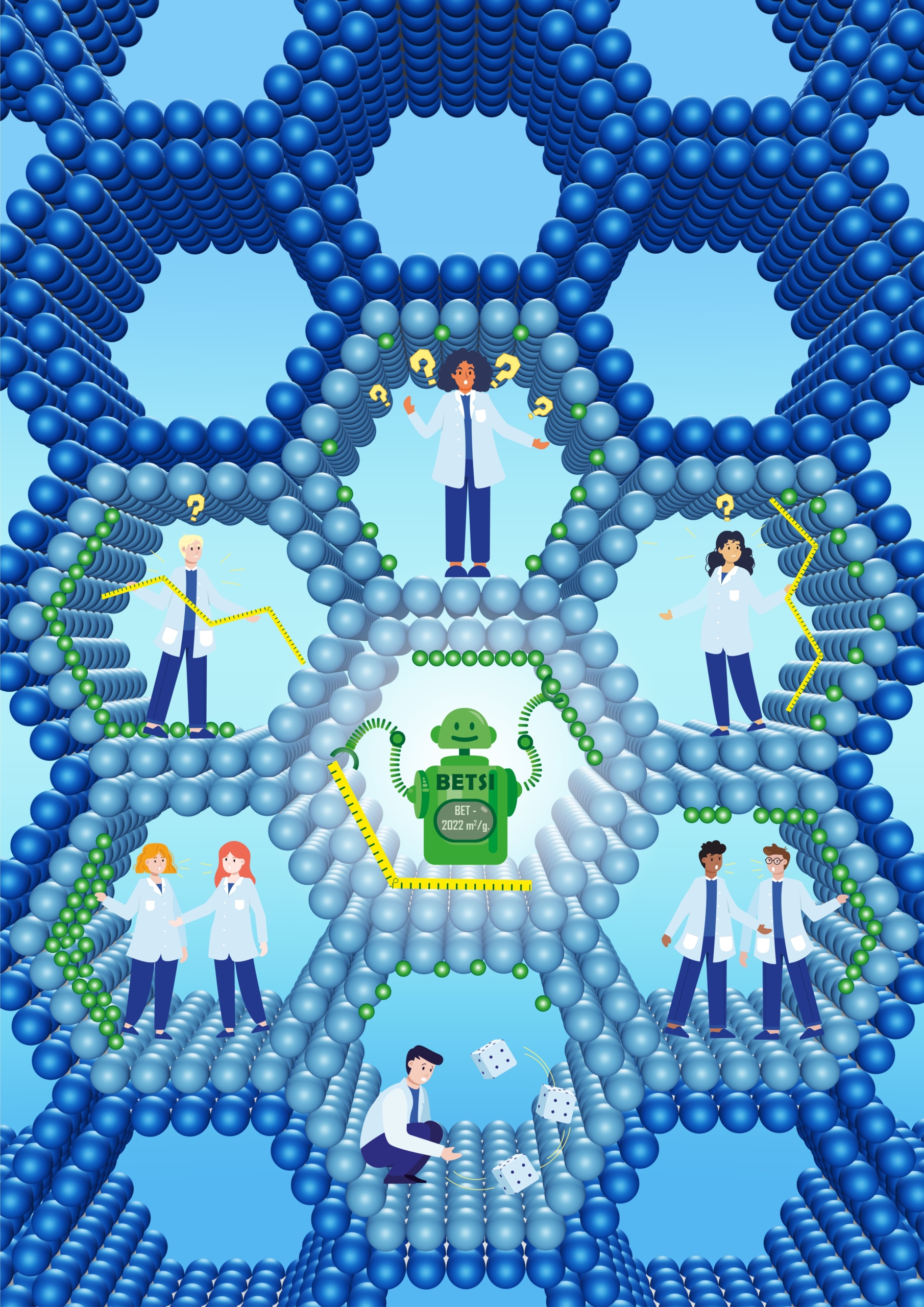How reproducible are surface areas calculated from the BET equation?
The Brunauer-Emmett-Teller (BET) equation for surface area determination is one of the most widely used and important equations in physical chemistry. Developed in the 1930s for non-microporous, open surfaces, it has since been used to estimate surface areas of a wide class of adsorbents such as active carbon, silicas, zeolites, and, more recently, porous metal-organic frameworks (MOFs). All of these micro- and mesoporous adsorbents have high academic and industrial relevance, with applications in medical technology, catalysis, and climate-change mitigation. Thus, reliable and reproducible calculations of their adsorptive performance are of paramount importance. Whilst the BET adsorption mechanism was only ever in questionable agreement with the adsorption on microporous adsorbents, the derived BET area was nonetheless considered a reliable metric that scales well with their adsorptive performance. In consequence, it has prevailed throughout the years as the most important figure of merit in porosimetry.
Whilst the reproducibility of the quality of porous materials – and in particular for PCPs – has been explored multiple times, herein, we expose the previously ignored issue that BET area calculations, due to their intrinsic multi-point nature, are many times irreproducible even when obtained from the same isotherm. The group of David Jameriz (Univeristy of Cambridge) decided to test this hypothesis, and shared, in an effort unprecedented in porosimetry, 18 isotherms with 60 international laboratories (including our lab) with recognised expertise in gas adsorption and porous materials synthesis. In this process, the isotherms were anonymised and scaled-off to minimise recollection bias; then, the experts were asked to calculate BET areas in the way they saw most fit. Confirming our hypothesis, we report here dramatic inconsistencies in the experts’ calculations, with a spread of calculated surface-areas ranging from a few hundreds of square meters per gram for ‘easy’ materials, up to more than 7,000 square-meter per gram for materials with more complex isotherms.
In order to mitigate such critical reproducibility concerns, they have developed an algorithmic approach to calculating BET areas from gas adsorption isotherms, which we call BET Surface Identification (BETSI). BETSI only requires the adsorption isotherm as input data. It operates on and extends the previously known Rouquerol-criteria for manual BET calculations, to make, for the first time, an unambiguous BET assignment from an adsorption isotherm possible.
Please read the article and use the BETSI software free of charge:



